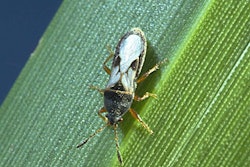Forget what you think you know about fertigation. It’s not just for large grounds, golf courses and sports fields. It’s not cost prohibitive. And it doesn’t require an advanced degree in mathematics and engineering to figure out.
Instead, it is a tool that has proven itself on many levels, including on residential yards and small commercial properties. It offers dependable, predictable results, with environmental benefits. And it can give you a competitive edge with clients who are not only eager to waste less, but also to have the best-looking lawn on the block.
Fertigation facts
Fertigation, in the simplest terms, is the practice of delivering fertilizer through an irrigation system. First developed for agriculture more than 40 years ago, fertigation gained popularity in traditional turf management a few decades ago when golf course superintendents recognized the benefit of a system providing a more efficient, customized method of meeting the nutritional needs of turf and ornamentals. Soon, sports field managers began experimenting with it and were rewarded with a much quicker recovery time for their sports turfs that take a weekly beating.
But it was not until more recently that fertigation spread to the residential market. Why has it taken so long? Price and product. Larger systems were traditionally priced out of reach for this market and there were not many affordable small-scale options. Nor were there systems designed to provide reliable fertigation to residential properties. Initially, the markets successfully using fertigation were ones with homogeneous plants.
New technology allows fertigation to be integrated into many different types of irrigation, from drip to surge irrigation to fixed sprinkler systems, and manufacturers are designing systems to address the specific needs of residential landscapes. This has helped reduce the costs. In fact, if your client has a properly designed sprinkler system, you can integrate a fertigation system for only a few hundred dollars.
All aboard
Even with the recent advancement in fertigation for residential properties, chances are you’ve never even considered it. Fertigation has not been widely accepted as a viable option either because landscape contractors are assuming a high cost or because they fear it will be difficult to operate or explain to the client. Or perhaps it’s just that you, like all of us, get in the routine of doing things one way and don’t explore other options. But these benefits of fertigation should get your attention.
· Perhaps the biggest benefit of all: Fertigation allows you to target fertilizer applications to the areas that need them, and those applications get directly to the soil where they are needed, which means you can apply them at lower rates, which cuts down on costs. And you can achieve all of this with less equipment and fewer man-hours.
· Fertigation is designed to make light, frequent feeding possible, which promotes color, density and vigor.
· Optimal fertilizer rates build stronger root systems. Plants with strong root systems require fewer pesticides and herbicides. They are better able to withstand stress and can squeeze out weeds.
· Plants’ well-developed root systems are capable of storing and using water and nutrients more efficiently.
· Fertigation eliminates turf “burn.”
· Fertigation reduces the potential for runoff, making it better for the environment. There is less chance of leachable nutrients not being absorbed by the plant. The fertilizer is absorbed directly into the soil and is immediately available to turf or plants.
Closing the deal
Fertigation is an easy up-sell to clients, especially those who already have an irrigation system. Once you’ve outlined the benefits and explained the costs, getting them to buy into the concept of automatic fertilization is not a big leap. And for you, this offers not only a more efficient way of operating, but also a new revenue opportunity. Each client’s fertigation system will require servicing. Someone must refill the tank every four to six weeks. It is cost effective, saves on labor and allows you to allocate your workforce among other jobs, all the while making your existing clients happy.











